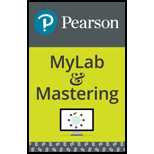
Concept explainers
(a)
Interpretation:
The
Concept introduction:
The elements in the modern periodic table are arranged in an increasing order of their atomic number. In the modern periodic table, the horizontal rows are known as periods, whereas vertical columns are known as groups. There are
(b)
Interpretation:
The atomic number of cuprum is to be predicted from the periodic table.
Concept introduction:
The elements in the modern periodic table are arranged in an increasing order of their atomic number. In the modern periodic table, the horizontal rows are known as periods, whereas vertical columns are known as groups. There are
(c)
Interpretation:
The atomic number of stannum is to be predicted from the periodic table.
Concept introduction:
The elements in the modern periodic table are arranged in an increasing order of their atomic number. In the modern periodic table, the horizontal rows are known as periods, whereas vertical columns are known as groups. There are
(d)
Interpretation:
The atomic number of plumbum is to be predicted from the periodic table.
Concept introduction:
The elements in the modern periodic table are arranged in an increasing order of their atomic number. In the modern periodic table, the horizontal rows are known as periods, whereas vertical columns are known as groups. There are
Want to see the full answer?
Check out a sample textbook solution
Chapter 3 Solutions
EP INTRODUCTORY CHEM.-MOD.MASTERINGCHEM
- Refer to the periodic table and find the atomic number for each of the following. (a) hydrogen (b) boron (c) aluminum (d) titanium (e) arsenic (f) strontium (g) tin (h) bismutharrow_forwardState the suffix in the name for each of the following. (a) NaI (b) HI(aq)arrow_forwardInclude physical states:arrow_forward
 World of ChemistryChemistryISBN:9780618562763Author:Steven S. ZumdahlPublisher:Houghton Mifflin College Div
World of ChemistryChemistryISBN:9780618562763Author:Steven S. ZumdahlPublisher:Houghton Mifflin College Div Introductory Chemistry: A FoundationChemistryISBN:9781337399425Author:Steven S. Zumdahl, Donald J. DeCostePublisher:Cengage Learning
Introductory Chemistry: A FoundationChemistryISBN:9781337399425Author:Steven S. Zumdahl, Donald J. DeCostePublisher:Cengage Learning World of Chemistry, 3rd editionChemistryISBN:9781133109655Author:Steven S. Zumdahl, Susan L. Zumdahl, Donald J. DeCostePublisher:Brooks / Cole / Cengage Learning
World of Chemistry, 3rd editionChemistryISBN:9781133109655Author:Steven S. Zumdahl, Susan L. Zumdahl, Donald J. DeCostePublisher:Brooks / Cole / Cengage Learning Living By Chemistry: First Edition TextbookChemistryISBN:9781559539418Author:Angelica StacyPublisher:MAC HIGHER
Living By Chemistry: First Edition TextbookChemistryISBN:9781559539418Author:Angelica StacyPublisher:MAC HIGHER



